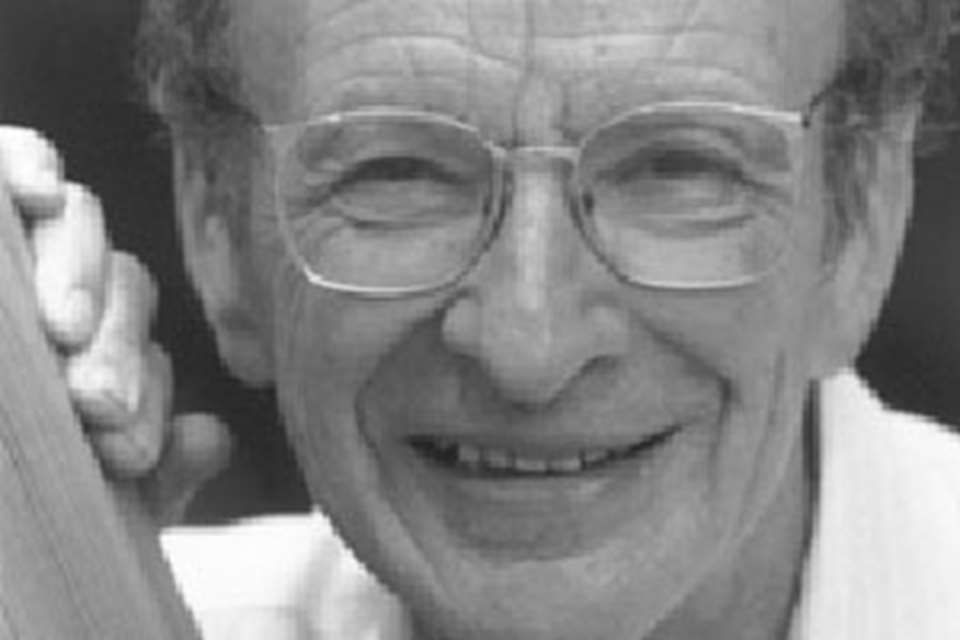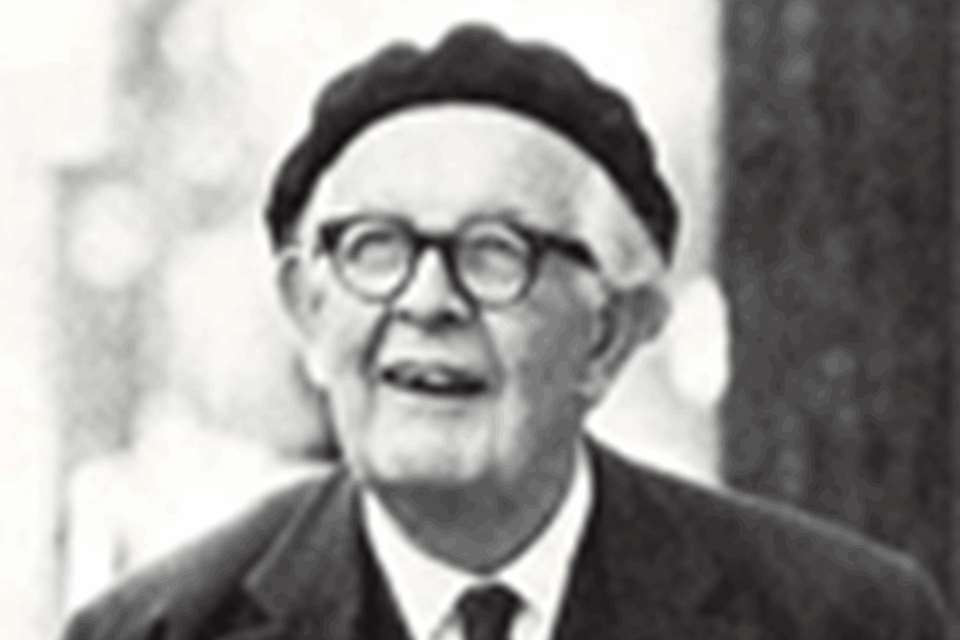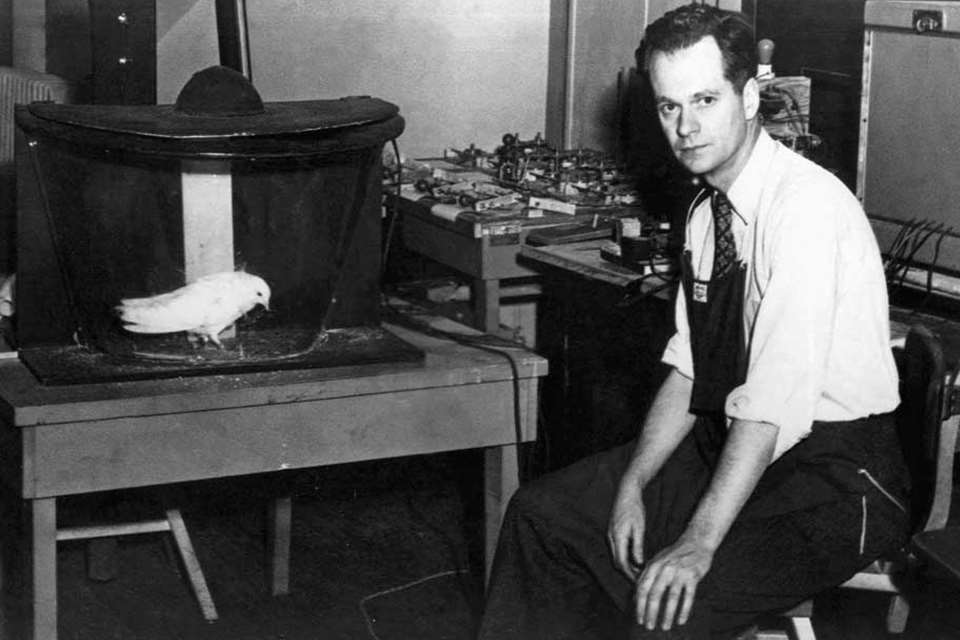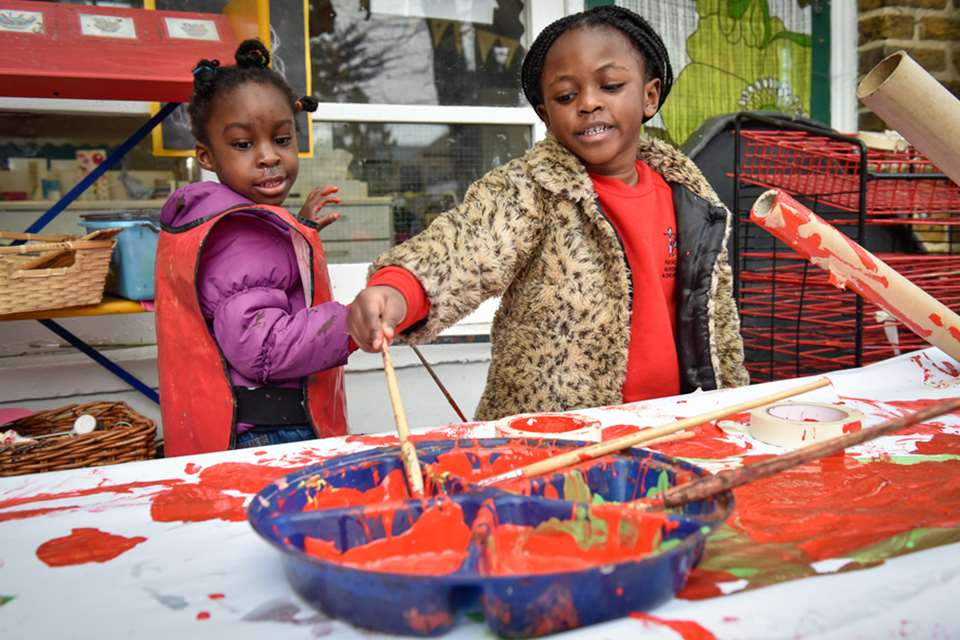Early Years Pioneers - Mihaly Csikszentmihalyi
Linda Pound
Monday, March 21, 2016
Linda Pound explores ‘creativity guru’ Mihaly Csikszentmihalyi’s theory of flow and looks at its potential in early years practice

Mihaly Csikszentmihalyi, who has a Hungarian and Italian background, was born in 1934 and has described living his early life in war-torn Europe. He settled in America at the age of 22 where he studied, and has remained ever since. He currently works at Claremont University in California where he heads up the Quality of Life Research Center.
He has developed a theory, known as flow, which describes the moment when a person in completely involved in an activity simply for its own sake. He describes creativity as a central source of meaning in our lives and argues that, ‘When we are involved in [creativity], we feel that we are living more fully than during the rest of life.’ Mr Csikszentmihalyi has written a number of books on the subject and is widely regarded as the guru of creativity. He developed his theory of flow from the work of Abraham Maslow and his concept of self-actualistion.
 Mr Csikszentmihalyi interviewed people for a range of fields, choosing people who spent a lot of time and energy engaged in a particular interest but who were not rewarded by any external factors such as money or acclaim. His work has not been developed with early childhood practitioners in mind, but Mr Csikszentmihalyi considers many contexts including wider aspects of education, commerce, sport and leisure.
Mr Csikszentmihalyi interviewed people for a range of fields, choosing people who spent a lot of time and energy engaged in a particular interest but who were not rewarded by any external factors such as money or acclaim. His work has not been developed with early childhood practitioners in mind, but Mr Csikszentmihalyi considers many contexts including wider aspects of education, commerce, sport and leisure.
WHAT IS FLOW?
Flow has been described in a variety of ways. Mr Csikszentmihalyi himself suggests that when flow occurs, ‘we… feel in control of our actions… [with] a sense of exhilaration, a deep sense of enjoyment that… becomes a landmark in memory for what life should be like [and] usually occur when a person’s body or mind is stretched to its limits in a voluntary effort to accomplish something difficult and worthwhile’. More simply, flow has been described by a reviewer as ‘the state of involved enchantment that lies between boredom and anxiety’.
In order to achieve flow, skill and challenge need to be matched. If the challenge is high and the skill base low, anxiety occurs. Where the skill base is high but the challenge low, boredom takes over. For example, someone in the early stages of learning tennis may be completely absorbed by simply being able to achieve a relatively low level of challenge such as getting the ball over the net consistently. In order to achieve flow, Andy Murray would require a different challenge!
Flow has been said to be synonymous with the term autotelic – which simply means that we do what we do because we are intrinsically motivated, we simply want to do something for its own sake. This is the opposite of exotelic – things which are undertaken for reward or a later goal. Mr Csikszentmihalyi suggests that in order to achieve happiness, we should try to approach everything through flow – developing a sense that whatever we do is worthwhile for its own sake.
THE ESSENTIAL INGREDIENt OF CREATIVITY
Dr Keith Sawyer, Morgan distinguished professor in educational innovations at the University of North Carolina, suggests that creative peaks occur when there is a sense of flow – leaving little distinction ‘between the self and the environment… between stimulus and response [and] between past, present and future’. Sawyer goes on to suggest that flow arises from conversation, communication and collaboration, which in turn gives rise to creativity.
Mr Csikszentmihalyi asserts that true creativity emerges when three distinct elements come together. Creativity, for him, involves an individual who has mastered a discipline or subject, within a cultural area or domain. It also involves a social field or network – a group of people who are qualified to pass judgement on the creative work in question. Commenting on Mr Csikszentmihalyi’s work, Howard Gardner, Harvard professor of cognition and education, describes ‘the acid test for creativity’ as whether or not a contribution has altered the domain to which it belongs.
CRITICAL CONSIDERATIONS
The theory raises a number of questions. Some critics claim that Mr Csikszentmihalyi has made no attempt to quantify his findings – for example, the ratio of challenge to skill needed for optimum flow remains unclear.
This raises the question as to whether such data is achievable. Is the theory based on pure research or does it have any application? Is flow the same as happiness or enjoyment? If you reach a state of flow, how long does it last or does it simply dissipate once the event is over? (In discussing creativity, Dr Sawyer suggests that in the day following a period of flow, creativity remains at a high level.)
Is the research that underpins Mr Csikszentmihalyi’s theory too ethnocentric and goal-directed – more applicable to Western men than to other members of society? Or is it too rooted in mysticism and overly romantic? Some claim that it is nothing more than common sense, while others suggest that it is made incomprehensible through its over-use of jargon.
A major criticism arises from its apparently wide application. Mr Csikszentmihalyi’s findings have been used in the production of video games, for example, increasing the addictive nature of such games.
RELEVANCE FOR EARLY CHILDHOOD EDUCATION
While the terms used may be unfamiliar, many of Mr Csikszentmihalyi’s ideas can be linked to early childhood pedagogy.
Flow is reminiscent of Tina Bruce’s descriptions of children ‘wallowing’ in their play, exploring their ideas, their feelings and their relationships. She writes that, ‘Children playing will be deeply involved. It will be difficult to distract them from their play, because play is deep learning.’
It also links to Ferre Laevers’ work on involvement – which suggests that the indicators of high-level involvement include concentration, energy, complexity and creativity, composure, persistence, precision and satisfaction.
Intrinsic motivation is also understood by early childhood practitioners. We know that praise should be specific and linked to effort. We know that extrinsic reward – for example, rewarding children for reading a book or doing a drawing – undermines children’s intrinsic motivation. When the rewards stop – so does the behaviour.
Levels of skill and challenge, if not matched, will lead to boredom or anxiety. This seems to be closely linked to Vygotsky’s Zone of Proximal Development and Bruner’s scaffolding – where the adult seeks to match the two.
Meanwhile, the EYFS advocates that learning should begin with children’s interests. The people that Mr Csikszentmihalyi studied were interested in the things that produced a state of flow. This must be the starting point for nurturing children’s creativity and learning.
Mr Csikszentmihalyi’s description of what true creativity is might lead us to believe that young children are incapable of creativity, but Professor Gardner argues that, in some senses, young children are at the height of their creative powers.
Creativity involves making unusual connections and young children are constantly making those. It also involves originality. While young children are unlikely to have ideas original to the human race or even to their society, they can and do have many ideas original to them, and this should be encouraged.
This brings us to Anna Craft’s idea of ‘small c’ or everyday creativity. Whether or not we agree with Mr Csikszentmihalyi’s view of creativity, we can agree on the need to nurture the characteristics that lead to a state of flow.
When it comes to collaboration, conversation and communication, Mr Csikszentmihalyi argues that a state of flow emerges from conversation with others. Sustained shared thinking can contribute to this, as can collaborative play where children build on one another’s ideas.
In Group Genius: The creative power of collaboration, Dr Sawyer highlights the characteristics of a group working in a state of flow. He includes working together with familiar others; really listening to what is said; equal participation and good communication. None of us working with young children would argue against the importance of developing these traits.
The enjoyment that derives from attaining a state of flow is said to be a better indicator of future achievement than aptitude. Mr Csikszentmihalyi further suggests that boredom may lead to children taking unnecessary risks.
A STATE OF FLOW
Flow will be achieved when:
• there are clear goals
• the task is achievable
• it is possible to concentrate on the task in hand as distractions are no longer perceived
• there is immediate feedback
• there is a balance between the level of challenge and skill.
The person experiencing flow will have:
• feelings of deep, effortless involvement
• a sense of control over actions without fear of failure
• temporary loss of concern for the self with subsequent enhanced self-awareness
• the loss of a sense of time with hours appearing as minutes.
MORE INFORMATION
• Flow: the secret to happiness, www.ted.com/talks/mihaly_csikszentmihalyi_on_flow?language=en
• Csikszentmihalyi, M (1997) Creativity: Flow and the Psychology of Discovery and Invention. HarperPerennial
• Maslow on Creativity, www.psychologytoday.com/blog/one-among-many/201309/maslow-creativity
• Professor Keith Sawyer, www.unc.edu/home/rksawyer
• Professor Howard Gardner, https://howardgardner.com









